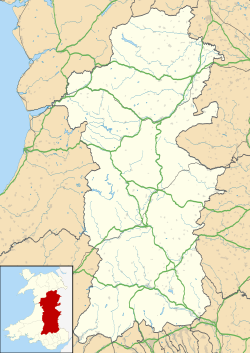Trallong
| |
|---|---|
 Trallong from Abercamlais | |
Location within Powys | |
| Population | 369 (2011 Census) [1] |
| OS grid reference | SN966296 |
| Community |
|
| Principal area | |
| Preserved county | |
| Country | Wales |
| Sovereign state | United Kingdom |
| Post town | BRECON |
| Postcode district | LD3 |
| Dialling code | 01874 |
| Police | Dyfed-Powys |
| Fire | Mid and West Wales |
| Ambulance | Welsh |
| UK Parliament | |
| Senedd Cymru – Welsh Parliament | |
Trallong (Welsh : Y Trallwng) is a village and community in Powys, Wales, in the historic county of Brecknockshire.


